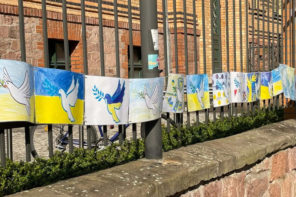What are the intended/unintended consequences of anti-smuggling and anti-trafficking policies?
It is widely estimated that hundreds of thousands of people are trafficked in Mexico each year. Since 2005, Mexico has passed a series of anti-trafficking laws at the national level; the most recent reform passed in 2014. Despite this legislation, very few people are ever arrested or convicted of trafficking. In Mexico, human traffickers operate with impunity.
An issue that emerged during my research with Central American migrants in transit is the ways in which anti-trafficking legislation is interpreted and implemented at the local level. Officials are quick to conflate human smuggling with human trafficking, but the reality is more complex; in Mexico smugglers have emerged as crucial sources of protection for migrants seeking to avoid organised criminal traffickers who control migrant routes. This issue is further complicated in a context where Mexican state officials are widely known to work in collusion with organised criminals. Smugglers become easy scapegoats.
Another area of concern is how trafficking laws are deployed tactically. For example, state officials are known to intimidate migrant shelter workers and human rights defenders by accusing them of human trafficking. Two of my closest interlocutors who worked at different shelters were publicly accused by local immigration officials of human trafficking with the specific crime of trafficking minors.
While the charges were eventually dropped, it led to unnecessary suspicion and doubt about the work of shelter workers. The case demonstrates how the ambiguity of such laws allows local agents to criminalise humanitarian practices. It is encouraging that Mexico has taken steps to recognise trafficking as a serious issue, but the problem will not be solved until corruption and impunity are addressed in real ways at the local level.
Are border fortifications/restrictions a useful or counterproductive response to mass movements of people?
If the goal is to actually stop people from moving or crossing national territories, then no: border fortifications are not particularly useful. In the Central America-Mexico-US corridor, we know that fortifications can be very good at deterring people from particular routes by funneling them into more dangerous and clandestine routes, landscapes and industries. But they do not stop people.
This is not to say that borders are not useful or productive. On the contrary, borders, and bordering practices along interior migrant routes, are extremely productive. In some cases, they produce imposing physical structures that disrupt natural ecosystems and historically rich corridors of economic and cultural exchange. In doing so, they produce profit – big profit – for a security-industrial complex with multiple vested stakeholders.
More securitisation in the form of surveillance, high-tech walls, guards, and detention facilities in turn creates demand for more clandestine industries to move people and drugs. These industries serve the insatiable appetites of (mostly) U.S. capitalists and illicit drug (and prison) industries, though associated violence is almost always constructed as a product of people of color.
Violence – real or perceived – thus becomes a very productive tool to instill fear of “the other”. And fear … well fear is perhaps the most useful tactic of all as politicians and states seek power and legitimisation. So if the goal is to generate profit, fuel xenophobia and elect ‘strongman’ leaders, then yes, borders – as symbols and material realities – are quite useful.
→ Back to the virtual roundtable.









